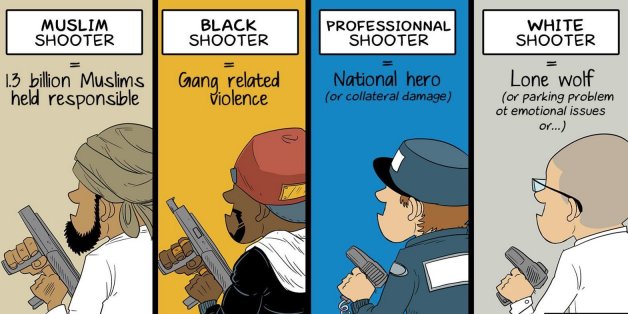cb284414@ohio.edu
When looking into covering diversity it may be easy for journalists to pat themselves on the back and say "look how far we have come since the 60s, even the 90s." Yes, this may be true, we have seen an uptick in stories about blacks, Hispanic, and Muslim communities but are we really giving them the representation they deserve? According to Neiman Reports article titled Making Black Lives Matter in The News we are told that it won't take "the occasional big projects about race [to change the portrayal of African Americans]; but a sophisticated and sustained effort over time." This effort needs to be perpetuated not just by minorities who work in the journalism field, but by everyone. Shani O. Hilton, the executive editor for news at Buzzfeed brings up the valid question of what is "the black story." What is any story based around identity? Hilton continues to say that there are multiple "there is a economic story, an education story, a youth and young women and young men story." For Austin Long-Scott, a former national reporter for The Washington Post, the story is about power and the levels of power "Because of changes begun by the civil rights movement and continued by the changing attitude of younger people, race [isn't] as simple as it used to be," The author of this article believes, as I do, that two key ways to help the mainstream journalism sites cover African Americans is by taking a holistic approach that looks at the many complexities and intersections of the black community. This approach combined with more diverse news rooms will make a clear distinction between coverage of the past and coverage of the future.
It isn't just the black community that needs this type of revamping in the news room. Two other communities that are commonly reported on improperly include the Muslim community and the LGTBQ community.
Within the Muslim community a major issue with the coverage about them has to do with the words and facts that are inserted into the article without context. In the article titled The Words of Journalists Have Power the writer, Wailya Lari, shows just how harmful and useless many of the factoids used in covering Muslims can be by comparing a profile of her husband to that of a suspected terrorist. Both these people had changes in appearance, recently married, and have traveled to Pakistan several times. Lari's point is that even though the profile of a suspect is important, entering many of these factoids without context make these attributes seem suspicious. Another point she brings up is the fact that these profiles are being amplified by the fact that they are not seen in suspects of terrorism that aren't certain shades of brown.
The LGBTQ community faces challenges about the types of stories that are put out and the rhetoric used in these stories. According to the article Covering the Transgender Community, in Nieman Reports, the author claims that most stories cover the subjects pre-transition life and gender reassignment surgery without focusing on broader issues that the transgender community faces daily. They also claim that stories "often use terminology and pronouns that are objectionable to the transgender person." As journalists it is imperative for us to listen and attempt at understanding the needs to the community. This includes changing our rhetoric, especially when reporting crimes.

No comments:
Post a Comment